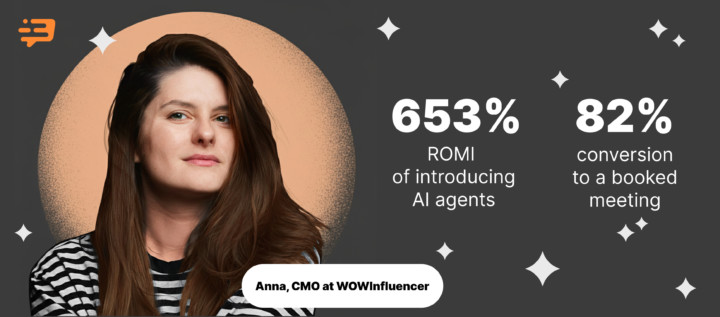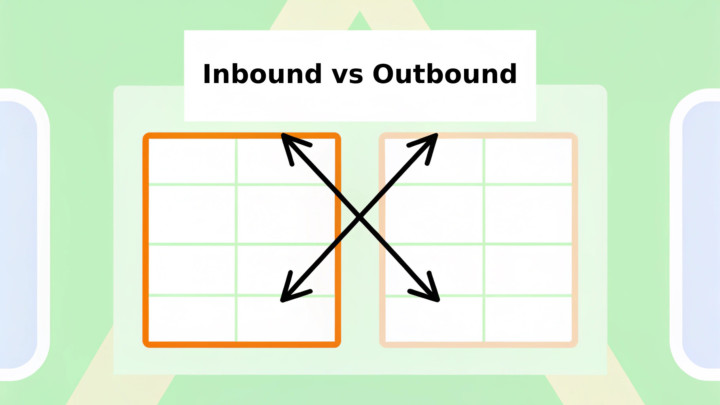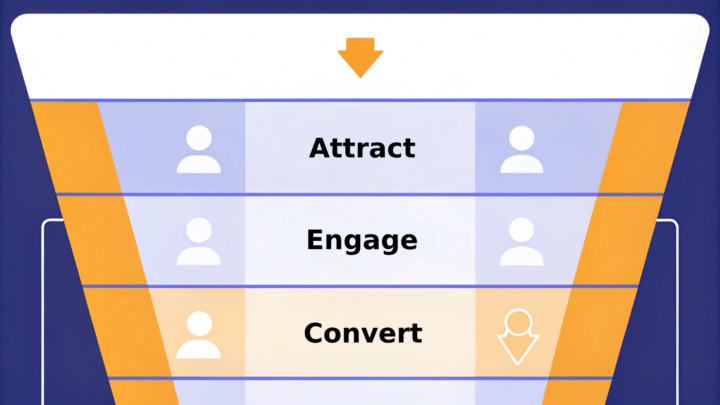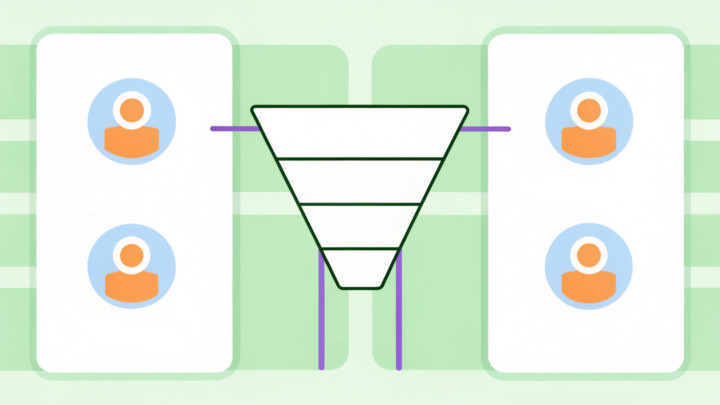How to Use BANT for sales and marketing in 2022

Jake: “How much do you pay for the cloud storage you used before?”
Prospect: “It’s above $100.”
Jake: “Nice. Are you that person who will sign the contract?”
Prospect: “No”
Jake: “Is that right that you use CRM to manage the sales process?”
Prospect: “Yes, you are right. Some of us are still figuring out how to use Bitrix.”
Jake: “Have you set a date by which you will need the service?”
Prospect: “I guess in several months.”
Jake: “Okay then. We can provide you with access to a testing account. Don’t you mind leaving your email?”
Prospect: “Oh, I should think about it. I will call you back, okay?”
The prospect has never returned…
This must have been a classic BANT conversation where a salesperson qualifies a prospect based on the authority to make a purchasing decision, budget, purchase timeline, and need for the products.
But the deal is lost.
What is Jake’s mistake?
Instead of adjusting and having a natural conversation, he kept asking questions from the list without genuinely listening to the prospects’ responses. As a result, Jake missed out on the opportunity to know about the decision-maker, budget approval process, or the reasons for long deadlines.
Here is an ultimate guide on lead qualification
Thanks! Now check your inbox
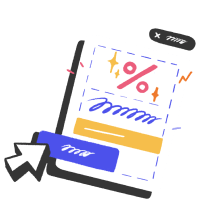
In this guide, you will discover the BANT approach and learn how to correctly use this framework for sales. It will allow you to sharpen your selling skills by qualifying leads and finding the key to their needs.
What is BANT?
This is a framework for determining how qualified a prospect is and whether a sales representative should focus on communication and pain points or deprioritize the conversation.
The term BANT stands for Budget, Authority, Need, Timeline.
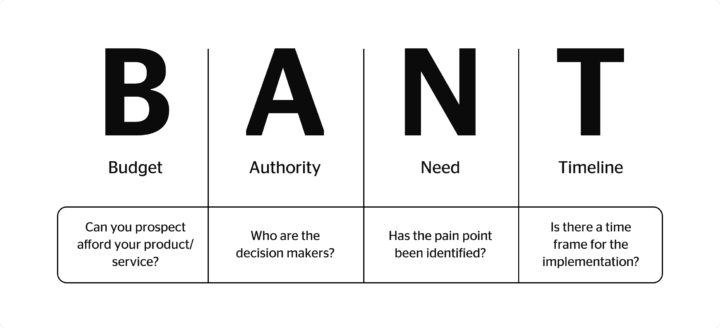
Budget — How much money is allocated to the purchase/deal? How much does a prospect expect to spend?
Authority — Who makes final decisions concerning the deal? Is it the prospect themselves or another company’s representative?
Need — What are the pain points the prospect wants to be addressed?
Timeline — When does the prospect’s company plan to receive products/services?
The BANT framework helps sales managers save the lion’s share of their time by communicating with prospects who are most likely to convert into sales.
Instead of waiting too long for prospects’ reactions and engagement, sales managers can use BANT to fetch all essential information about the budget, stakeholders, needs, and deadlines to define the probability of a deal and communication priority.
If a prospect presents positive responses to at least three BANT criteria, the sales team can consider the prospect qualified. The BANT approach saves time and enables sales reps to reap maximum results out of a conversation with potential customers.
How does BANT work? (Based on the Dashly sales team example)

Meet Paul.
He is the head of the Dashly sales team.
Paul had been using BANT for 5 years already. Now, this framework is at the core of the initial lead qualification process conducted by the sales team he manages.
For example, here is how a typical BANT conversation looks like in Dashly:
Paul: Hi [prospect name]! I’m Paul, your Dashly manager. And I’m happy to see your registration in our service.
Prospect: Nice to meet you, Paul!
Paul: In a few words I’m going to tell you about Dashly, then we’ll move to the discussion of your tasks and how our tool can be useful to you. But first, can you pls tell me about a task you want to solve with the help of our tool?
Prospect: I want to improve the conversion rate of my website.
Paul: How fast do you want to see the result?
Prospect: ASAP. I need to fix this issue urgently.
Paul: Ok. You’ve come to the right place! I see your current monthly traffic is 10K. Am I right? (It helps us to define the potential client budget.)
Prospect: Yep.
Paul: Great, and what is your position within a company?
Prospect: I’m the founder of [company name].
This is an example of the initial lead qualification we conduct with each prospect that comes into our CRM.
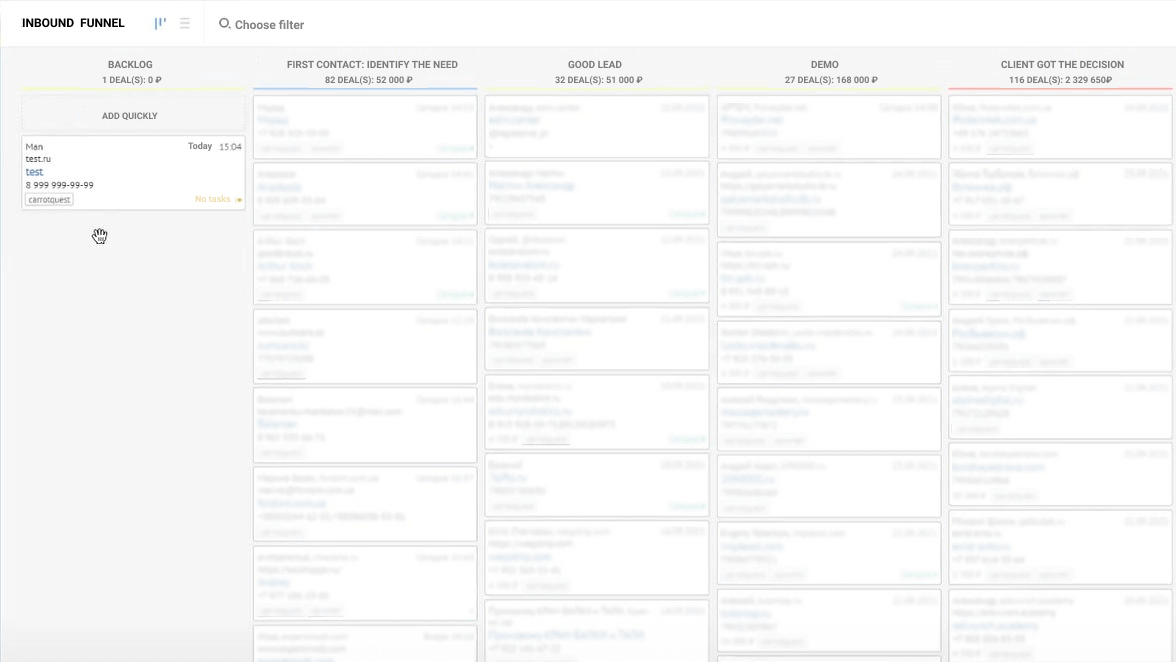
Due to the big amount of leads, we should find out which of them are hot to invite them to 1-2-1 conversation, and which are enough to go further onboarding in terms of the self-service.
Thus, we have a two-level lead qualification:
I-st step: 20-min call aimed to define hot leads by asking them BANT questions. Our task is to fill out users’ cards with the info about their task; its solution deadline; if they have a budget; their position within a company:
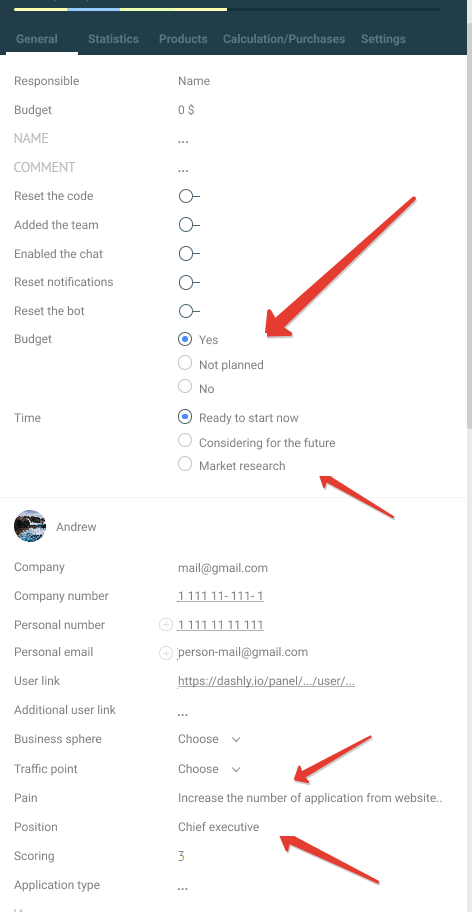
If the prospect doesn’t meet our criteria, we provide them with the self-service resources to go further.
Criteria we use to prioritize the qualified leads:
- Need or client task. It is important to know if our tool can solve the client’s task.
- Budget. “Yes” answer is enough to move this lead to the next step.
- Time. Perfect if client is ready to start using a tool within a week. Ok — if withing two months. Those, who don’t have a deadline, continue with a self-service.
- Authority is the less priority. If the prospect isn’t the one who will make a purchase decision, we just ask about the person who does.
If the prospect meets our criteria, we invite it to the second step.
2-nd step: An hour in-depth interview aimed to define prospect pain points, budget approval process, etc.
Guide on how to implement BANT in sales
The BANT technique was developed and implemented by IBM in the 1950s to boost the efficiency of their marketing. However, it still works for modern sales processes if applied correctly. Here’s how you can benefit from the BANT approach.
1. Define the prospect’s budget beyond the dollar equivalent
When it comes to products, it’s easy to qualify leads based on their financial expectations. If you provide a subscription-based service, you might need additional information about the buying process within a company.
Today, many SaaS companies’ pricing range is too broad. They can charge as low as $10 per month for a basic plan and tens of dollars for enterprise plans.
Asking “What is your budget?” during the first meeting isn’t the best idea. It’s enough to know if they have it at all. If you want more details, be more polite. For example, ask about the price of the current solution they use or used before.
If you sell a SaaS solution, it also makes sense to ask your client’s ROI expectations. If that matches with your prices, this lead can be qualified in terms of budget.
2. Identify who is in charge of making decisions
“Are you a decision-maker in this case?” is the worst wording to know this info.
The answer to this question may come from the budget question. For example, when the prospect has a set budget, he or she can spend on services or marketing campaigns.
But in big companies, it’s a group of people rather than a single individual. Typically, a group of three stakeholders decides upon the fate of deals. So even if one person signs a contract, the majority of the team is involved in the discussion.
As you implement BANT, your task is to find out who participated in the process of decision-making: their job titles, roles, priorities, and, finally, contacts.
Ask the prospect to organize a meeting with everyone involved, or reach out to them personally.
The more contacts you establish, the easier it will be to conclude a deal and influence the final decision. Communication is the key to opportunities.
3. Define how serious the issue is
Your next task is to understand how significant the problem is to the prospect and their company. During the conversation, you should find answers to the following questions:
- Is the company motivated to solve the issue?
- What happens if they don’t address it?
- Is there any other solution that might appeal to their needs and attract their attention and energy?
Defining the issue is more than a generic “I want to increase Conversion Rate”. It is about something specific, like “the conversion of the pop-up on the website because in the current solution we use there is no opportunity to customize design”
A prospect may say that the company is working tight-lipped on solving an issue, but the leadership’s real goals might be different. That will hinder the sales process in this or that way.
4. Establish time frames for the sales process
Now, when you are aware of the budget, people in charge of decisions, and the real need for your product/service, you need to figure out how much time they intend to spend on finalizing the sale.
There is a big difference between three months and a year. By defining prospects’ timelines, you can prepare for the prioritized sales.
5. Fetch information from multiple sources
“How should that help me fulfill the BANT strategy?” — would you ask. It’s important to stay aware of the prospect’s concerns, intentions, objections, and wishes. You can discover surprisingly useful information by researching their social media, signing up for their newsletter, and even attending their public events.
Paying attention to their activities outside your deals and negotiations can help you define some pain points that your service or product can eliminate.
Here’s a real-life example:
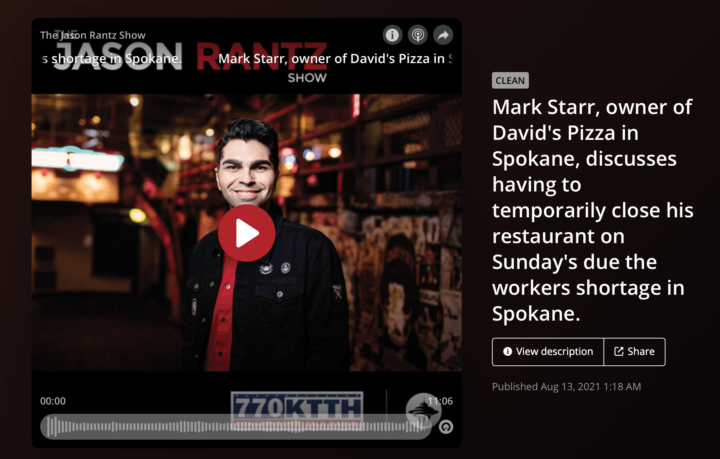
The owner of an Italian restaurant complains about a shortage of workers in a podcast for the Jason Rantz Show. This situation presents a nice opportunity for recruiting software developers or HR agencies to sell a service.
You can find similar info about your leads as well — that will enhance the power of your BANT strategy.
There’s no need to go far to get familiar with stakeholders even before the moment of a formal meeting. Check out their social media pages: LinkedIn, Facebook, Instagram. Some of them share ambitious plans for the company development, announce new features and products (where your service might come in handy).
Keeping tabs on the prospect’s company can sharpen your competitive edge and give you a wholesome picture. You can determine whether it’s a good fit for your product even before major BANT questions are asked.
6. Let technologies track your progress
As you practice the BANT approach in your sales process, you can track your pipeline and relationships with customers using digital instruments and apps. For example, while you process several prospects simultaneously, you will be able to define how far the negotiations go and what exactly triggered or prevented the deals.
Pro Tip: Apply BANT as a way of communication, not just a list of questions. No one likes to be interrogated. When your dialogue sounds natural, prospects are more willing to share extra information.
The conversation in the introduction showcased a typical mistake: reps ask questions one by one without learning anything about the budget approval process, decision-makers, or the reasons for product introduction.
Lastly, remember that there is no one-fits-all approach for implementing the BANT strategy. Try to find some additional information that would help you qualify leads. Also, you can prioritize one aspect above others (for example, prospects’ budget or timelines). The BANT approach works well for many spheres, including B2B. You can get the first results of this marketing strategy in a month.
Read also:
Sales Funnel Report Essentials: A Guide for Your Team
Marketing Automation for Sales Funnels: What You Need to Know
Questions for BANT qualification
Here’s an exhaustive rundown of questions that can help you define each of the four criteria.
Budget
- What are your current expenses to solve this problem?
- According to our estimates, your team is spending [sum] per [week, quarter, year] on this issue. How does that correspond with your planned budget?
- We have calculated that your team may potentially save [sum] per [week, quarter, year] by making this [decision, purchase, change]. How does that correspond with your planned budget?
- Whose budget is used to solve this issue?
- How much would you pay by trying to solve this problem/achieve this goal by yourself?
- What are the risks and expenses that you would bear in five years if this issue stays unresolved?
- How much does the price matter for the final decision?
- What is the budget range for this deal/purchase?
- What ROI do you expect to see?
By tackling those points, you help both sides: sales reps and prospects. The latter can identify the optimal solution: trying to solve issues themselves (and how much it will cost them) or search for external services. When the BANT approach is used, after being questioned about the potential risks and long-term perspectives, prospects are more likely to start addressing issues right now.
Authority
- What is your position withing a company?
- Who is the product/service intended for?
- Have you purchased this product/service before? Who was in charge of the decisions, and how did the process go?
- At this stage of communication, many of our customers bring in [Product manager, stakeholders, Head of finance, etc] to discuss the sales details. Would you like to invite [person/people] to our next conversation?
- Will anyone else be accountable for this decision?
- Are there any possible issues we can meet during the purchase process from the security or lawyers side?
This part of BANT helps you figure out who is in charge of the final settlements and contract signing. By inviting accountable people to join your conversation, you can adjust to their schedule in advance and eliminate the need for additional calls.
Need
Your task is to find out how does the issue influence the client company success. In Dashly we use a list of relevant questions for this:
- Pls tell about your tasks, are there any you need to solve during the nearest quarter?
- What measures do you take to achieve them? What tools have you used before for this goal?
- What don’t you like about your current or previous solutions?
- Do you understand how it influences your company success now? What are your primary concerns at the moment? Do they fit within your team’s plans?
- What are the risks and dangers if your team does not achieve that goal/solve that problem?
By assessing the company’s current efforts to solve a problem, you can figure out solutions that would successfully work in their case. Probably, they could address the issue by using your product/service alone or in conjunction with other options.
If a prospect isn’t sure about the core issue, it is good to ask about the KPI. “What is your current and desired KPI?” for example. The answer will be a good argument to get potential clients back on track if they decide to leave.
Also, it’s crucial to discover personal gains being reaped by the prospect from the sales process and how that may impact the entire team. Sometimes potential buyers chase their own goals while forgetting about product aspects that can improve the performance of their colleagues or help them fulfill their goals. This is where BANT allows you to get into the details.
By asking about the company’s plans, you can predict whether your product/service will be re-ordered after the initial purchase.
Timeline
- Is there any date by which you would like to have the product/solution in place?
- What are your goals for [retention, revenue, sales, etc]? Will you be able to fulfill them without any kind of changes?
- Provided your deadline, we will need to finalize our agreement by [propose an earlier date]. Is that possible?
Remember that there is no need to urge a prospect when you’re using BANT. Often, you can discover their deadlines and work within this timeline. You can position your product to help the prospect’s company solve their tasks in time by asking about goals.
Based on the information provided through the BANT framework, you can craft your plan of action.
Finally, understanding the prospects’ deadlines can help you define the customers to serve first. For example, if a company or a person agrees in a month or two, that sale should be the number one priority.
On the other hand, prospects that plan to make purchases next year can be given valuable materials or resources. Thus, they could get familiar with your product and make a decision later.
Here are 30 questions that sales reps use for lead qualification during first customer interview
Thanks! Now check your inbox

Sales and marketing experts often find the BANT framework is efficient, but it’s revealed too late.
Stay ahead of the competition — use BANT for marketing
With so many potential customers around, reaching out to all of them may be too overwhelming. The BANT approach allows offloading salesmen and saving time for prospects who matter.
But what if you even don’t need to call those who don’t fit your Ideal Customer Profile?
By qualifying potential customers at the lead capture stage, you focus team efforts on companies and prospects who are more likely to bring you revenue.
The BANT framework can be implemented in survey/contact forms, chatbots on a website, and pop-ups.
Thus, we use some BANT questions during client onboarding. For example, carefully ask about budget:

The pricing and traffic info help our sales team to understand how much users are ready and need to pay for Dashly, how deep they’ve dived into the product. It is easy because anyone from the team sees this data on the user card.
Polina, the Dashly growth marketer, told about this case in the article 👇
For this goal, Dashly clients use pop-ups and chatbots on a website as well:
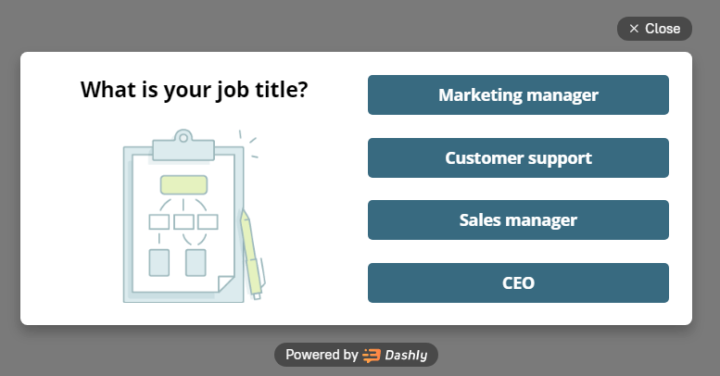
Pop-ups that offer website visitors several options to choose from work perfectly for:
1) lead capturing and qualification
2) client onboarding.
The example above may be used as one of the pop-up windows to define the authority of a prospect. You can also identify budget, timeline, and other requirements in a such way.
It was a classic way to qualify leads for sales. But there is a more popular method — via conversation with a bot on a website:
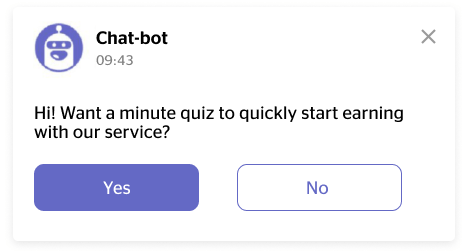
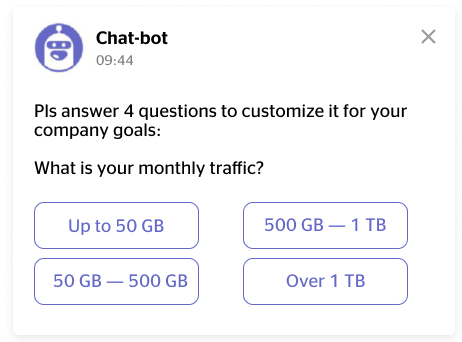
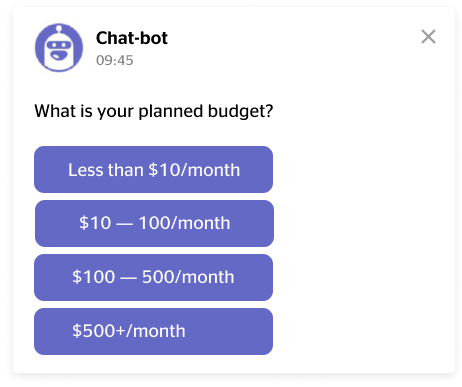
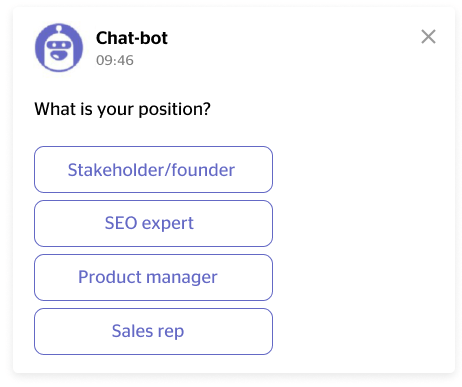
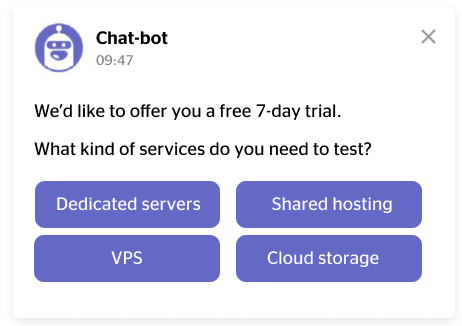
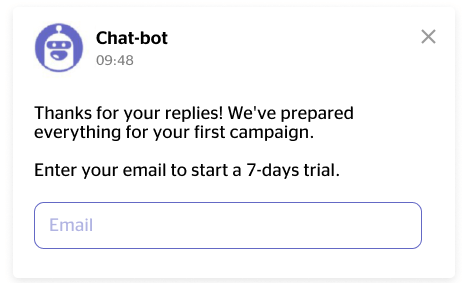
When someone interacts in a dialogue with the Leadbot, the information about the conversation goes to the Dashly user card. Prospect’s replies complement the data about the pages and the actions they have done on the website.
As a result:
- Marketing team continues nurturing leads that don’t match ICP,
- Sales team gets hot leads and contacts them using the answers to BANT questions and behavior info as a context to start communication.
Want to learn more about prospect qualification?
Thanks! The first email is already in your inbox

Read also:
- The best way to collect emails: 5 top-notch methods unveiled
- 3-step guide on inbound lead qualification: how to qualify inbound leads on autopilot
- Choose your ideal lead nurturing platform: Top 10 software tested by experts
- 20 AI sales tools: Boost your sales strategy with revolutionary technologies






